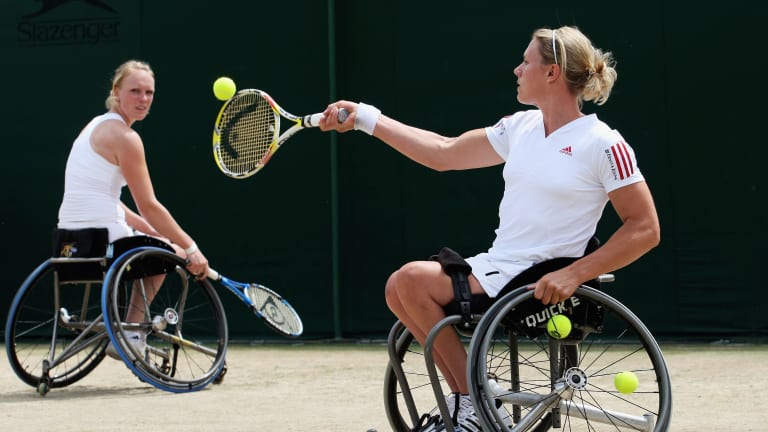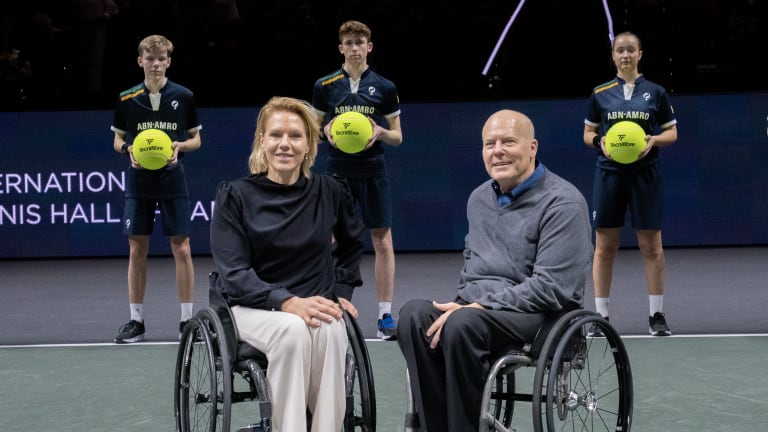International Tennis Hall Of Fame
Esther Vergeer's road to Newport didn't include a Wimbledon singles title—through no fault of her own
By Jul 18, 2023International Tennis Hall Of Fame
International Tennis Hall of Fame launches “Be Legendary” youth program in Melbourne, Indian Wells and Miami
By Dec 05, 2024International Tennis Hall Of Fame
Maria Sharapova and the Bryan brothers are elected to the International Tennis Hall of Fame
By Oct 24, 2024International Tennis Hall Of Fame
Maria Sharapova’s election to the Hall of Fame may be polarizing, but it’s deserved
By Oct 24, 2024International Tennis Hall Of Fame
Maria Sharapova, Bob and Mike Bryan nominated for International Tennis Hall of Fame
By Sep 03, 2024International Tennis Hall Of Fame
Leander Paes: Doubles maestro, International Tennis Hall of Fame inductee
By Jul 19, 2024International Tennis Hall Of Fame
Richard Evans, veteran journalist, joins International Tennis Hall of Fame Class of 2024
By Jul 18, 2024International Tennis Hall Of Fame
Vijay Amritraj, 2024 International Tennis Hall of Fame inductee, is making tennis communal
By Jul 17, 2024International Tennis Hall Of Fame
New in 2025: Tennis Hall of Fame moves ceremony to August, Newport to host combined 125-level event in July
By Jul 17, 2024International Tennis Hall Of Fame
Leander Paes and Vijay Amritraj are the first Asian men elected to the Tennis Hall of Fame
By Dec 13, 2023Esther Vergeer's road to Newport didn't include a Wimbledon singles title—through no fault of her own
The 21-time Grand Slam singles champion will be inducted alongside Rick Draney on a historic day at the Hall of Fame.
Published Jul 18, 2023
Advertising
Advertising

Vergeer won big at Wimbledon—but only in doubles. “I would have loved to play singles there,” she says. “I was convinced that I could do it, but the organization wouldn’t let me.”
© 2009 Getty Images
Advertising
Advertising
Advertising
Advertising

Vergeer and Draney will be the sixth and seventh wheelchair players inducted into the International Tennis Hall of Fame; never before have multiple wheelchair players been enshrined in the same year.
© Getty Images